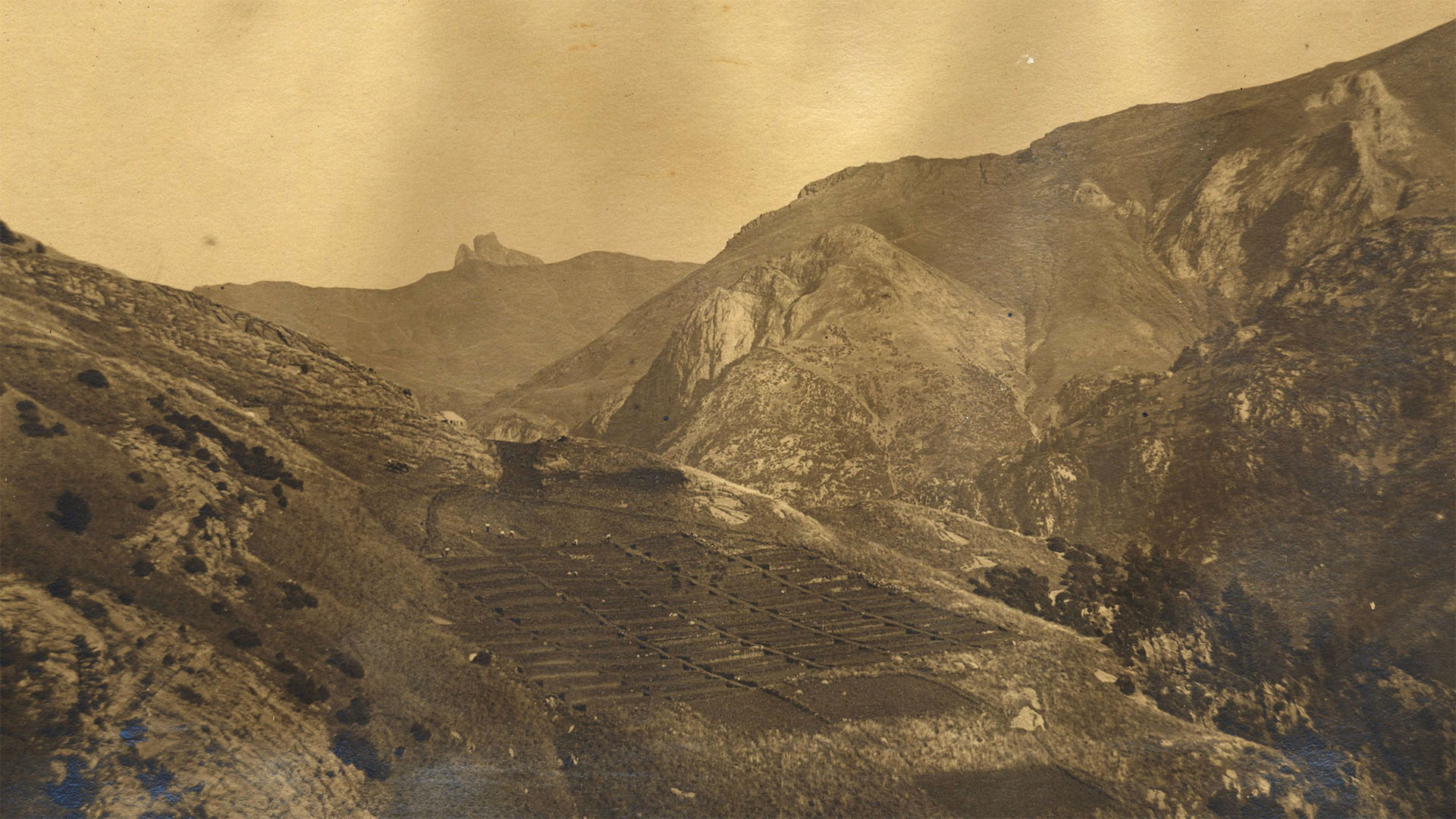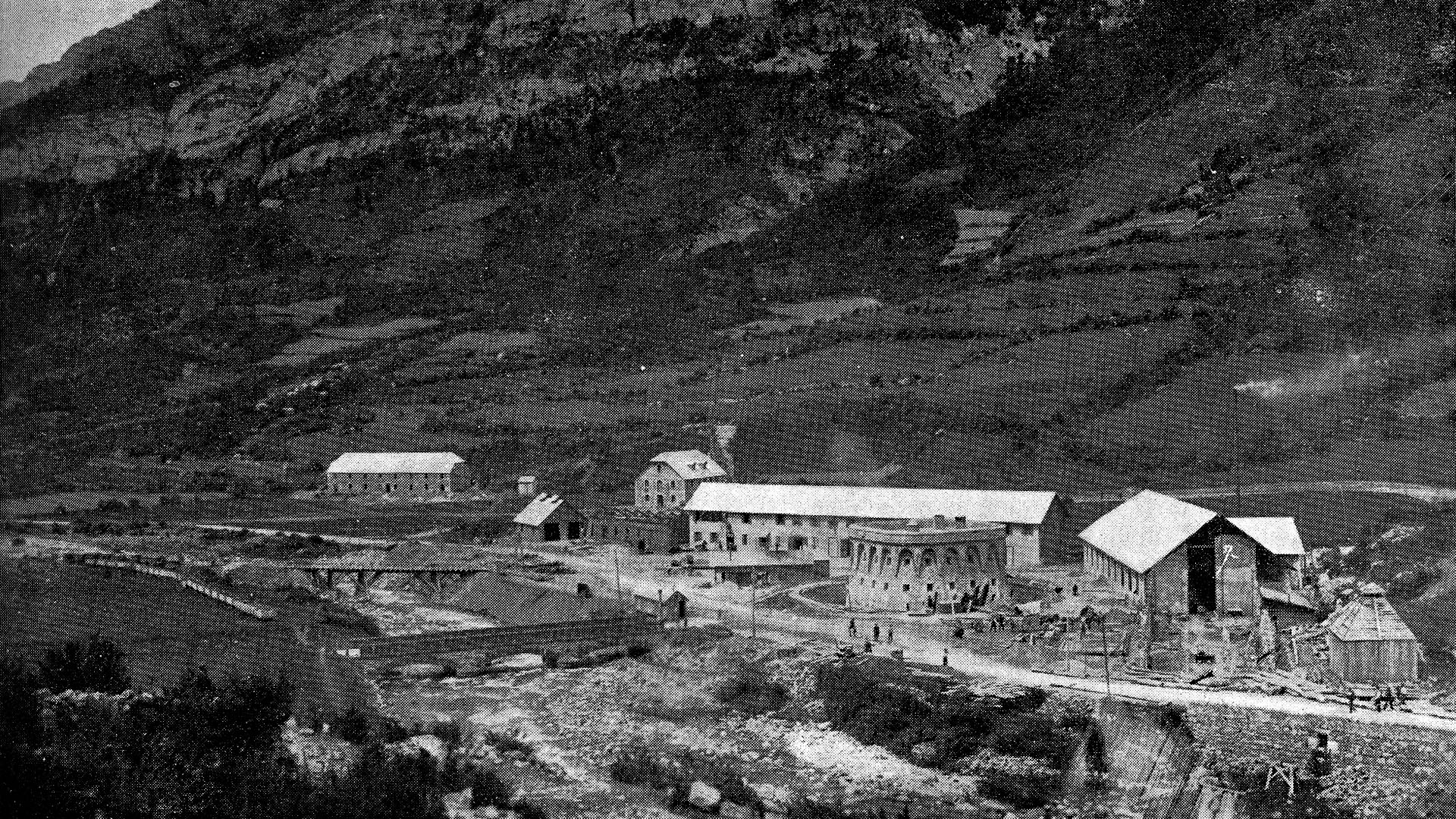World
Mountain and Trail Running
Championships 2025
canfrancpirineos
CanfrancPyrenees: a border territory full of history.
Canfranc ha jugado un papel decisivo a lo largo de la historia por su ubicación estratégica, justo en la frontera natural que representan los Pirineos.
Canfranc has played a decisive role throughout history due to its strategic location, right on the natural frontier represented by the Pyrenees.
The nearby Somport pass, the Summus Portus, has traditionally been one of the Pyrenean passes most frequented by tribes, conquering armies, pilgrims, smugglers, traders, shepherds, fugitives, and exiles.
The Romans chose it as a gateway to Gaul. They built a road that centuries later would be used by the barbarian peoples of northern Europe. Later it would be the Visigoths who entered the Iberian Peninsula during the fall of the Western Roman Empire at the beginning of the 5th century. There is evidence that the Muslims also crossed these mountains in their attempt to conquer Charlemagne's dominions.
In the Middle Ages, this historic road became a priority transit point for pilgrims on their way to Santiago de Compostela. The Somport was always the least abrupt and most accessible natural pass in all seasons of the year.
Very close to Canfranc was the Hospital of Santa Cristina de Somport (now in ruins), which was one of the most important in Christendom. This intense activity turned the town of Canfranc in the mid-15th century into a prosperous hub of communications and trade. It received royal privileges and experienced a period of great economic development.

In the mid-19th century, the international railroad line between Zaragoza and Pau via Canfranc began to be planned. Once again, this pass was chosen for its natural advantages and for the lessons that history taught us. It was a magnificent engineering project that, 75 years later, made the connection between Spain and France a reality, so much demanded by the Aragonese for decades.
The railway line was inaugurated on July 18, 1928, next to the formidable international station, an iconic building that at the time was one of the largest railway complexes in Europe. Today it is a luxury hotel and one of the most visited places in our region.
From that moment on, the history of Canfranc was closely linked to its railroad station. The Second World War turned this line of communication into a strategic pass for both the Nazis and the Allies. Formidable episodes of recent European history were written here, many of which have remained secret until a few years ago. They are stories of courage, tragedy, hope, and solidarity.
The international railroad line between Spain and France was interrupted in 1970 because of a broken bridge on the French side that was never repaired. A slow decline began that forced the inhabitants of Canfranc to look for new models of life and economy.
Tourism, nature, and sports have become the main references of the development of this territory in the last decades. Eighteen years ago, the Canfranc-Canfranc mountain race began to be organized, a sporting and social event that has become a world reference in its specialty.
The celebration now of the WMTRC consolidates that long experience and places us in a new time full of hope.
